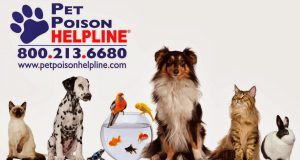According to Jordan Walker, dogs can teach you a lot of things such as becoming more responsible. What he learns from his pets, he shares this in Coops And Cages and in blogs dedicated to animal welfare such as this one. In this article, he will be sharing some information on kibbles and raw diet for pets.
They now come in all shapes and sizes! Buying these in bulk will even give you the extra benefit of hefty savings. Owning a pet has never been easier for very busy people. With pet food products such as kibbles, feeding pet dogs is even easier than heating up one’s own meal in a microwave oven. As an added bonus, people can even watch their pets dig into a colorful bowl filled with equally attractive pellets that come in fun shapes! Yes, this is entertaining alright. But are kibbles really doing any justice to pet’s health?
Nutritional Needs of Pets are Different
So what should constitute a healthy pet diet? For humans, a healthy diet should be a combination of different food groups consisting of carbohydrates, proteins, vegetables and fruits. This is said to contribute to better energy levels, beautiful skin and reduces the risk of illnesses. Instead of processed foods, health experts recommend consuming natural and organic produce since these are loaded with essential nutrients. For pets, however, the impending popularity of commercialized pet foods dictates the public to follow this path. These products are pre-mixed in accordance to pets’ nutritional needs. For example, cat food will contain more protein than dog food since cats will need twice as much protein than dogs. Ideally, pre-mix formulas are served to pets in order to give them their balanced nutritional needs.
The Other Side of the Story
With kibbles having the right amounts of vitamins and nutrients, then is it safe to conclude that pets such as cats and dogs are better living the rest of their lives with these as their daily meal? Choosing pet food should not be solely based on what’s the latest hype though. In the past, it was not common news to hear a four-legged pet suffer from cancer. Today, more than 50% of dogs contract it by the time that they are 10. One of culprits pointed at are toxins found in the environment, water and food.
Why Kibbles Could be Dangerous
Pets could be getting more than their needed nutrients in a bowl of kibbles. Aside from these, there are substances added in these and other compounds as a result of manufacturing processes. Examples of these are the following:
1. Vitamins and Minerals.
Now pet owners may be wondering why these two are on top of the list when they are considered healthy for both pets and humans. This does not have something to do directly with vitamins and minerals in general but where these are coming from. In order to cut on expenses, some manufacturers are buying their raw materials from unreliable sources and this may include the nutrients that are added to pet food. So a product that says made in a certain country may indeed have been manufactured in here which is somewhat truthful. However, its ingredients could come from countries that have a reputation for food recalls due to contamination.
2. Carcinogens.
The cooking process used in manufacturing kibbles produces some of the most dangerous carcinogens that anyone could possibly eat. An example of this is acrylamide, a compound that?s also present in cigarette smoke. This is produced when amino acids and certain sugars react when starchy foods are cooked in very high temperatures. Acrylamides are shown to have higher chances of being produced through baking, roasting, frying and broiling processes. In lab rats, acrylamide was proven to cause certain types of cancers. Other carcinogens that may be found in pet food are aflatoxins, heterocyclic amides, and polybrominated diphenyl ethers (PBDEs).
3. Food Additives.
What processed food will not have them? Salt, fat, and food coloring. These are why processed foods are looking delectably palatable and taste heavenly in the first place. Permitted additives cover a broad range of chemicals that include the food color tartrazine, a chemical linked to hyperactivity in children. Take note that while human food may contain these, how much more will be included in pet food where regulation is not as strict?
Is Raw Diet a Better Choice?
Due to the supposed dangers tied to processed pet foods, some experts and pet owners alike are now urging others to adopt the raw diet. Although no such research at the moment supports that this is indeed a better alternative than processed pet foods, many have testified that these indeed contributed to better pet health. Their proof? Pet photographs showing lean muscles, shinier coats and more ideal weight. The idea behind the raw diet is mimicking pet?soriginal food before they became domesticated. For example, dogs and cats would hunt in the wild for birds and rodents.
But just like kibbles, uncooked diet is not without its risks. According to a study conducted by the FDA Center for Veterinary Medicine (CVM), 196 raw pet food samples showed 15 of these positive for Salmonella while 32 were contaminated with L. monocytogenes. Samonella infection can cause spontaneous abortion, septicemia and gastroenteritis. The problem with salmonella infection when this hits pets is that this can be transmitted to human companions. In comparison, L. monocytogenes can cause listeriosis in both animals and humans. This condition attacks the patient’s nervous system, possibly causing meningitis. Furthermore, some experts claim that preparing one?s own pet food meal will have the risk of unbalanced diet.
Despite these downsides, advocates are saying that raw diet pet food benefits pale in comparison to ready-made options. One of these is that everything that the pet eats will come from natural sources and thus will offer better nutritional content. There is also the debate on the prevalence of obesity in pets where commercial pet food products are claimed to be one of the main contributing factors.
Conclusion
Processed versus raw diet? Choosing one will mean bearing the consequences that come with it. Keeping pet safe is one of the greatest concerns of pet owners. Until a viable research proves that one is better than the other, then pets will just have to keep on eating what’s on their plate.
Author: Jordan Walker
 Jordan is the lead content curator for Coops And Cages as well as a couple of other pet related blogs. His passion for animals is only matched by his love for ‘attempting’ to play the guitar. If you would like to catch him, you can via Google+ or Twitter: @CoopsAndCages.
Jordan is the lead content curator for Coops And Cages as well as a couple of other pet related blogs. His passion for animals is only matched by his love for ‘attempting’ to play the guitar. If you would like to catch him, you can via Google+ or Twitter: @CoopsAndCages.
 Dog Living A lifestyle magazine for dog lovers
Dog Living A lifestyle magazine for dog lovers







